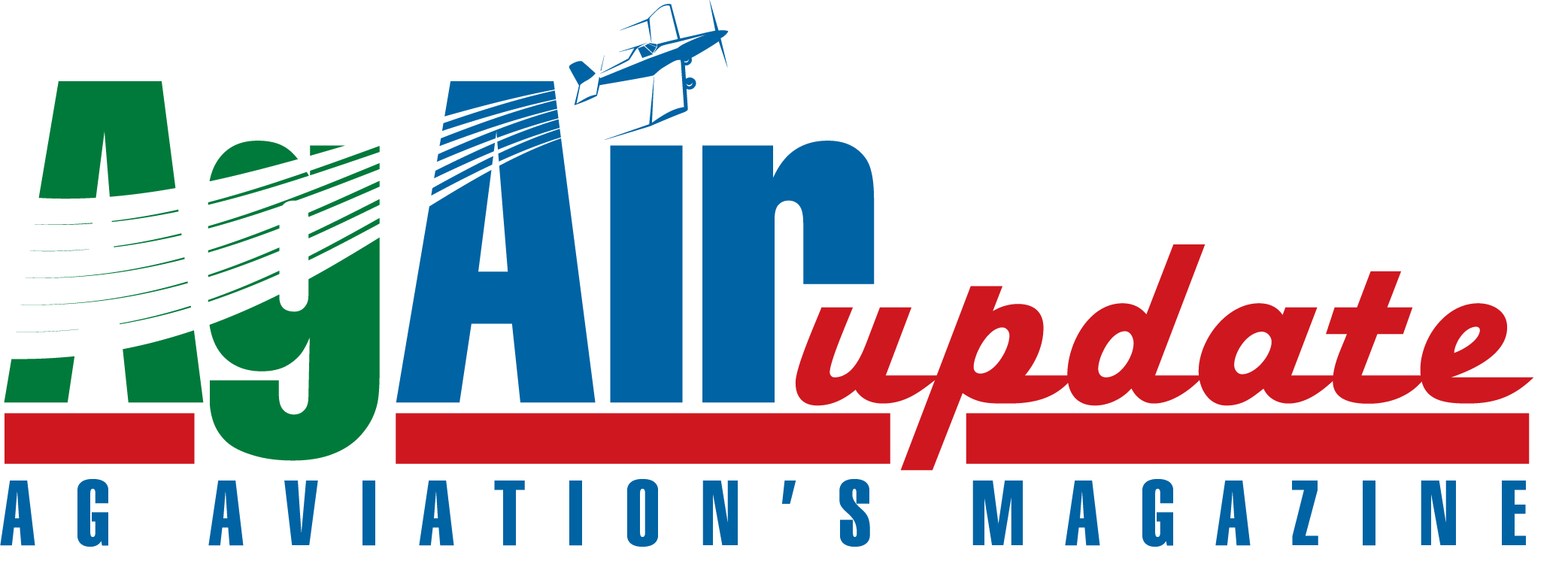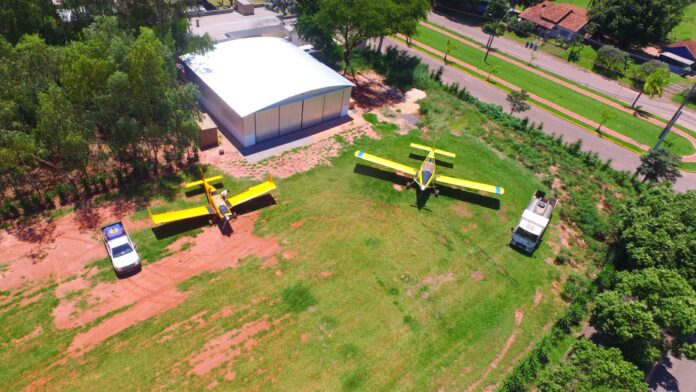Finding an operator with more varied experience than Rolemberg Jesus Vidotti is difficult. Born to a family with an aviation background – a brother, two uncles, and some cousins were pilots – in his youth, Rolemberg considered an engineering degree because of his other passion, racing cars. But he started flying, obtaining his private and commercial licenses between 1974 and 1975 at the Juiz de Fora Aeroclube in Minas Gerais. In 1976, Rolemberg started flying corporate, with an eye on a career as an airline pilot. However, in 1980, while chatting with other fellow pilots, someone suggested a bet among them to see who managed to attend ag school first. At the time, the only ag school in Brazil was the government-sponsored CENEA (Centro Nacional de Engenharia Agrícola – National Center for Agricultural Engineering), which was free. Still, applicants had to undergo a selection process. This course was mandatory in order to obtain the aerial applicator license, which is required in Brazil. Rolemberg applied for the course. Shortly after, Rolemberg’s older brother Antônio mentioned that he had visited a relative living in the north of Paraná, who complained that local growers had to rely on ag operators based far away in the state of São Paulo for their spraying. This relative told Antônio that having a local operator for their application needs would be ideal.
As Rolemberg returned home after this conversation, he received a letter from CENEA asking him to confirm his interest in taking the ag course no later than 15 days. He considered this a “signal from above,” and he promptly confirmed, graduating with the first class of 1980. Then, he and his two brothers, Antônio Vidotti Neto and Gutembergue José Vidotti, founded Viagro Vidotti Agro Aérea Ltda, taking a bank loan to buy a used, early EMB-200 Ipanema with a fixed-pitch prop for the price of one billion cruzeiros, Brazil’s currency at the time. Yes, that’s one billion with a “B”! Those were the sad days of hyperinflation in Brazil.
Initially, Viagro was based in Sertanópolis, state of Paraná, about 30 miles north of its present base in Londrina, the second biggest city in Paraná. While Antônio (who holds a pilot license but doesn’t fly ag) and Gutembergue (who is not a pilot) helped with the administrative and ground chores, Rolemberg taught himself how to fly ag in the first year, making his share of mistakes, as he admits. He hoped to fly enough acres in that first season to pay the plane loan, but he flew nearly 4.5 times more! This encouraged the brothers, who bought a second EMB-200, which Rolemberg totaled in a crash but walked out unscathed right at the beginning of Viagro’s second season.
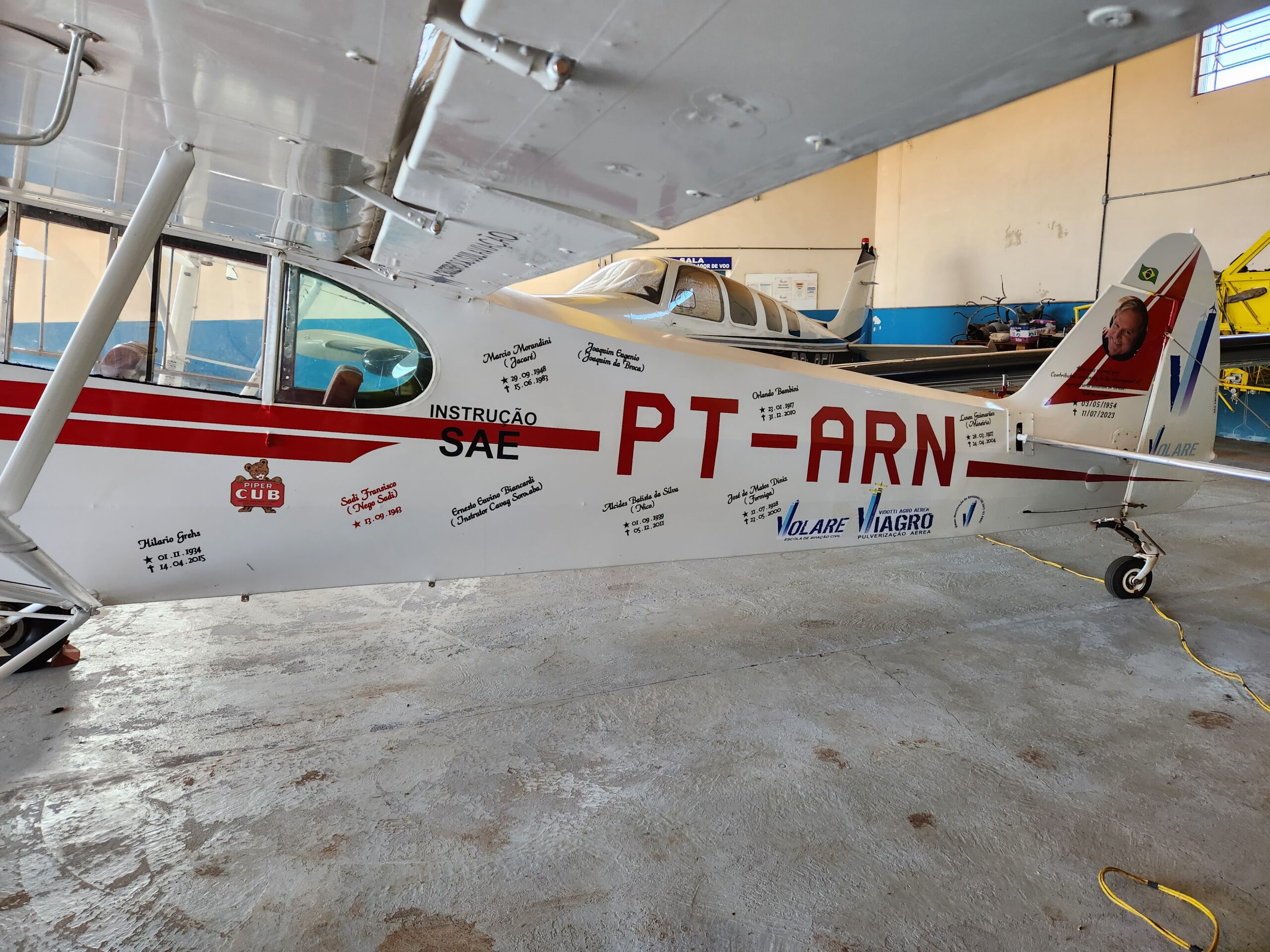
The brothers persevered, and with their hard work, the company grew steadily, as they later bought a brand-new EMB-201A Ipanema, a Cessna C-188 and a third Ipanema. In 1994, Rolemberg met Paul Marstellar of Tradelink, the only Air Tractor dealer in Brazil at the time. In those days, virtually all ag planes in Brazil were Ipanemas, Cessnas, or Pawnees. After a careful study, the brothers realized that a 400-gallon aircraft could treat 74% of their customer’s fields with a single load, so they bought an Air Tractor AT-401B. Their gamble proved successful, and they purchased their second AT-401B in 1998.
1998 was momentous for Viagro, as the brothers introduced GPS to the fleet and started a partnership with a large farming operation in Mato Grosso while keeping their original operation in Paraná. This partnership proved very successful, as it quickly added three more AT-401Bs and another Ipanema to its fleet.
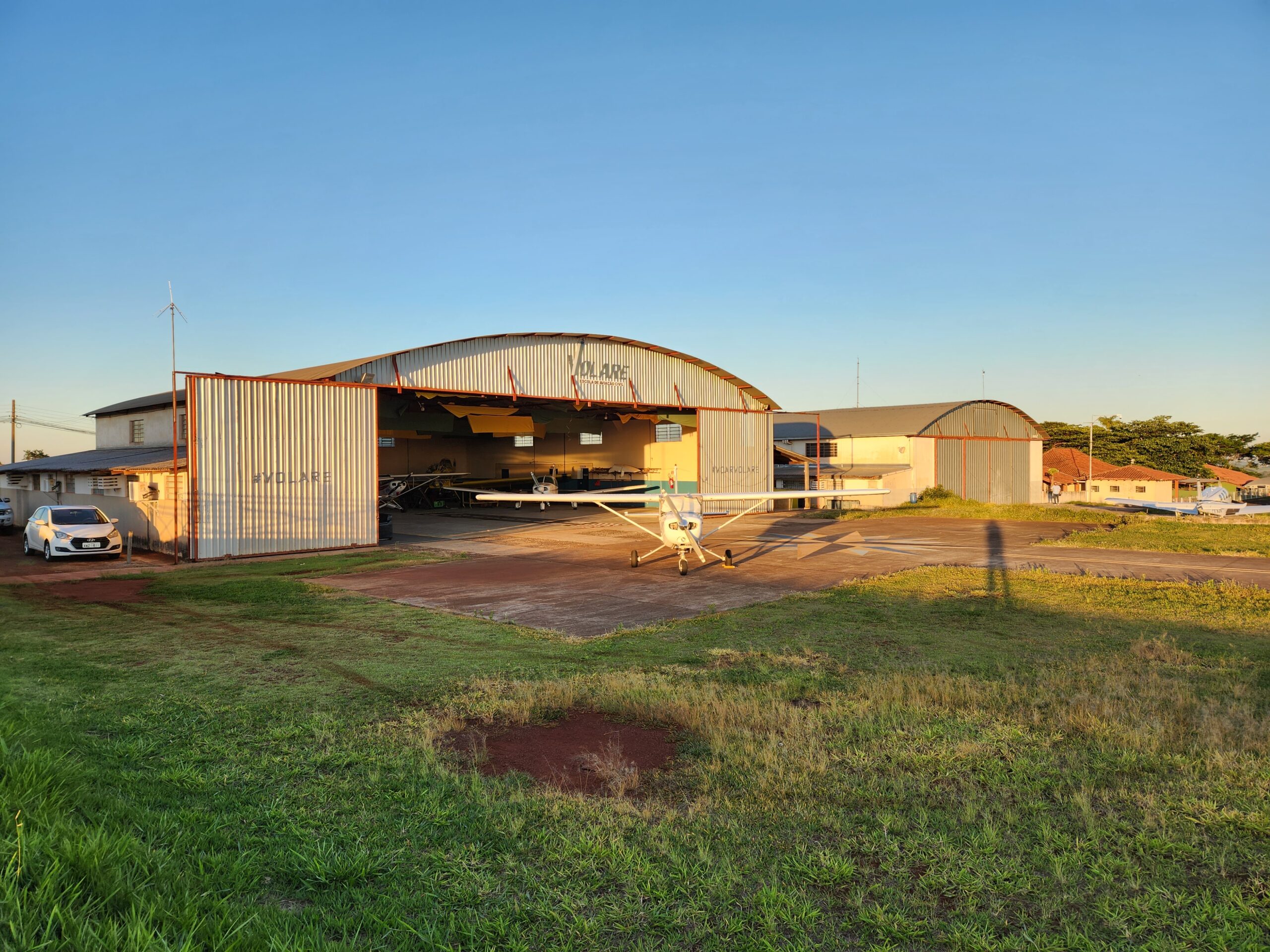
In 2006, the brothers moved their Paraná operation from Sertanópolis to Londrina and created a maintenance shop, Vimaer – Vidotti Manutenção de Aeronaves Ltda. Viagro also bought its first turbine that year, an Air Tractor AT-402B, followed by four AT-502Bs and, in 2008, an AT-802. They also had an Embraer EMB-710 “Carioca,” a licensed-built Piper Cherokee 235 Pathfinder, for coordination and support. Despite this success, in 2009, one of the brothers, Antônio, left Viagro to pursue his own business.
In 2011, Rolemberg asked ANAC, the Brazilian counterpart to the FAA, to replace his old paper pilot license with a new plastic one, and due to their mistake, it came with a CFI rating instead of his IFR. Rolemberg had never been a CFI, but as he asked for a corrected license, he took this as a “second signal from fate” and decided to open a flying school. Thus was born Volare Escola de Aviação Civil Ltda. – Volare Civil Aviation School.
Based on a private airport in Londrina, Aeroporto 14 Bis (SSOK), with an asphalt runway of 1,035 meters (3,395 feet), which is shared with other operations, Volare operates three Cessnas C-152s for the private, commercial, and instrument courses. For the IFR course, one of the C-152s is equipped for Area Navigation (RNAV) with a Garmin 430 unit, digital artificial horizon and HSI. Also, the GA-30 flight simulator in the school has two EFIS screens. The school has a Beech Bonanza for students requiring time in aircraft with retractable gear, while a Piper PA-18 is offered for those needing taildragger time. Volare doesn’t have a twin-engine aircraft for the multi-engine rating, but it had one before and Rolemberg is looking to buy another one.
In 2014, the farming operation in Mato Grosso changed administration, and the partnership with Viagro ended. After the breakup, Viagro was left with one Ipanema, four AT-401Bs, and two AT-502Bs. They turned their focus to the market in the state of Paraná. Today, Viagro Agro Aérea operates four AT-502Bs, two AT-401Bs and two EMB-202 Ipanemas, treating mostly sugarcane, 85% of their work, for five mills belonging to a large sugarcane company. The other 15% of the work comprises an impressive list of crops: soybeans, corn, cassava, rubber trees, eucalyptus, pastures, peanuts, orange trees, watermelons and achiote.
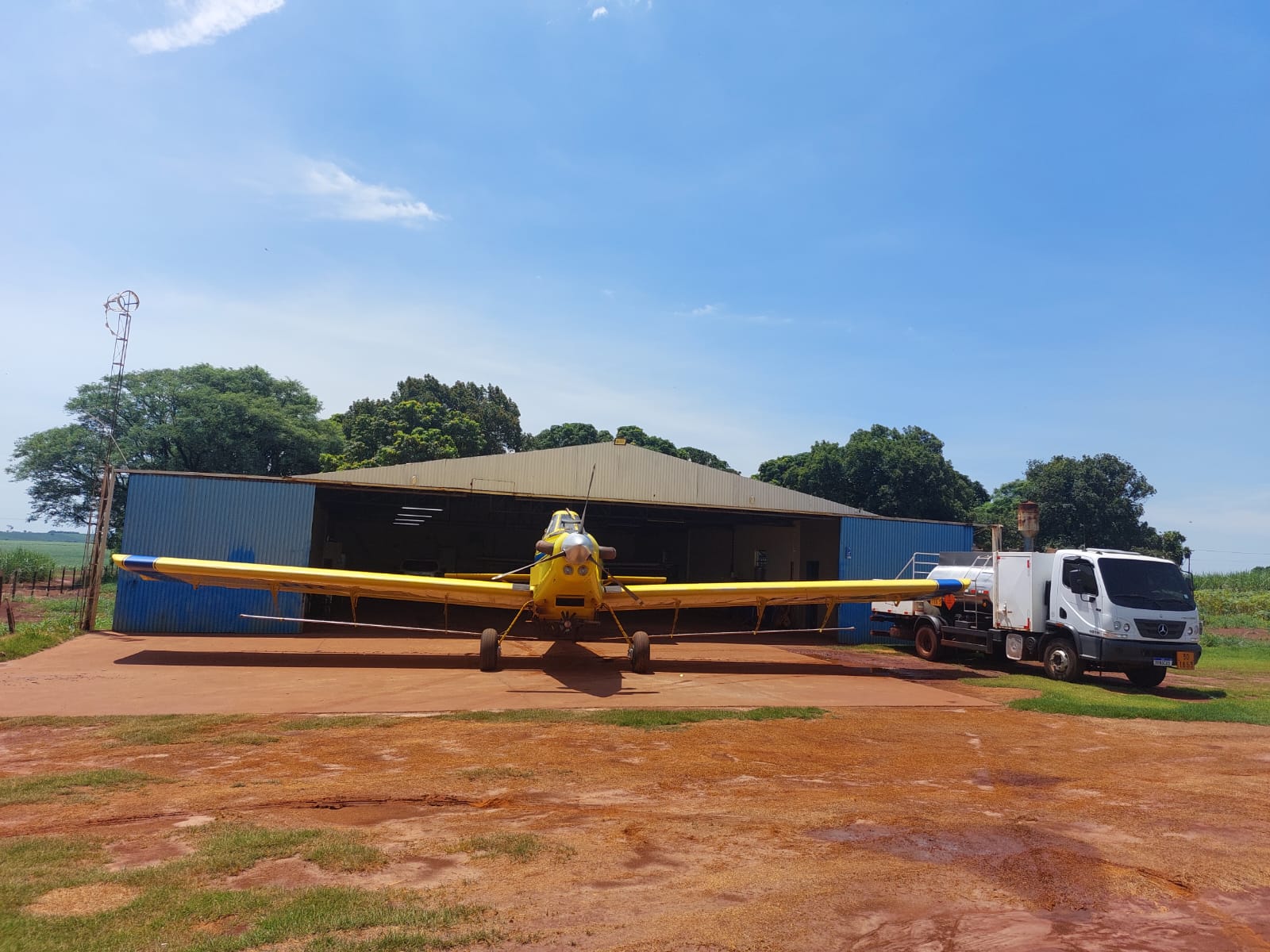
Almost all applications are liquid, about 98% made at 3 to 5 GPA, as Rolemberg prefers higher rates. Viagro’s ag planes all use Zanoni spraying systems with STOL nozzles. Actually, as Zanoni decided to obtain an ANAC CST (STC) for their Air Tractor 402 and 502 spray systems, Viagro was asked by Zanoni to do the flight testing required for the CST. CSTs are not required for spray/dispersal systems in Brazil, but Zanoni decided to go the extra step.
Viagro bought its first GPS, a Satloc, in 1998 and has stayed with the brand ever since. Viagro airplanes either have an M3 or a Bantam unit, and Rolemberg is satisfied with them. Rolemberg points out how much the technical requirements have changed for his operation since 2014 when the sugarcane mills started demanding the application maps for all applications, all of which get reviewed. The sugarcane mills also require that the Viagro airplanes flying for them have flowmeters and laser altimeters, and even the support trucks are required to have Inmetro-certified equipment, Inmetro being the Brazilian equivalent of the National Institute of Standards and Technology – NIST.
Nine pilots fly the Viagro ag planes, and only one of them is not a Volare graduate – another advantage of owning a flight school, as Rolemberg mentors his pilots from the beginning after finding firsthand how hard it is to learn ag flying alone. He usually starts the novice ag pilots on cassava fields, which are almost always square or rectangular in the region, then upgrades them to more complex fields as they get more experienced.
Although the three companies are formally based at the Aeroporto 14 Bis, the ag planes only go for maintenance at Vimaer. Otherwise, they usually stay at the three bases Viagro has in the municipalities of Rondon, Maringá, and Paranacity, respectively, about 100, 50, and 65 miles from Londrina. From there, they operate out of 40 satellite strips, some maintained by Viagro. Rolemberg says that “ag pilots shouldn’t fly worrying about bad strips” and gives preference to satellite strips between 1,000 and 1,200 meters (3,000 to 4,000 feet) long and 40 meters (120 feet) wide. Viagro has installed a 300,000-liter (80,000-gallon) water tank on some runways to support spraying operations. With this support infrastructure and the performance of its large ag planes, Viagro only needs five support trucks for its eight ag planes.
Like many other operators, Viagro has been challenged by misguided environmentalists with an agenda. Rolemberg says that two cities in Paraná, Nova Esperança and Presidente Castelo Branco, have passed or tried to pass restrictive laws against aerial applications (but not including drones), claiming that they affect silkworm growers. Besides that, settlements of so-called “landless workers” have brought fourteen lawsuits against Viagro, none of which were justified – twelve of those have already been dropped by the court. Fortunately, Gutembergue’s daughter Paola Christine de Araújo Vidotti Casemiro is a lawyer and has successfully defended Viagro in all these legal hurdles. SINDAG, the Brazilian Association, also helped, visiting the Nova Esperança town hall to speak for ag aviation.
About to complete 44 years in business, Rolemberg and Gutembergue are already considering their succession. They plan to pass the helm to Paola and to Rolemberg’s son-in-law Bruno Gomes Tagliari, who is also an ag pilot for the company. They will have a great legacy to carry on.

